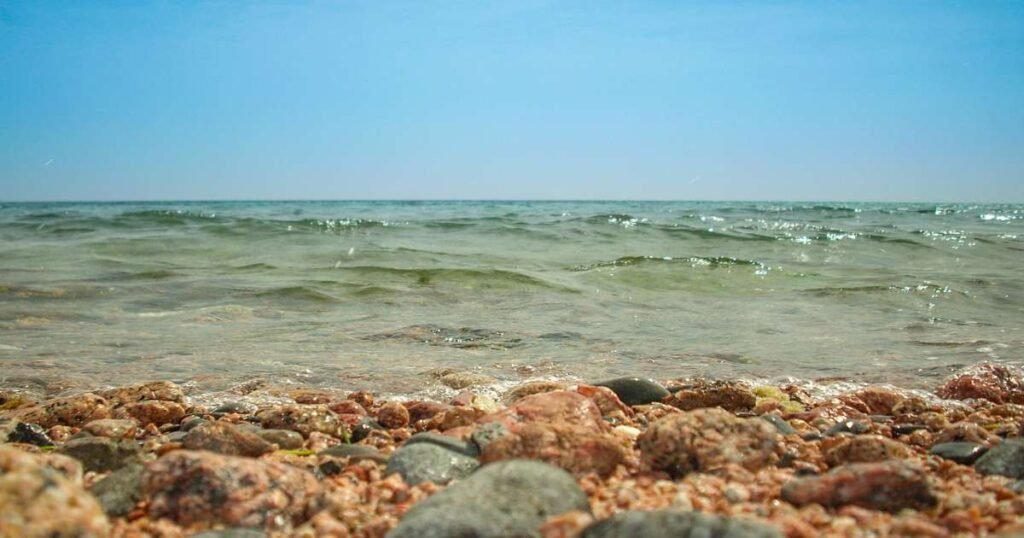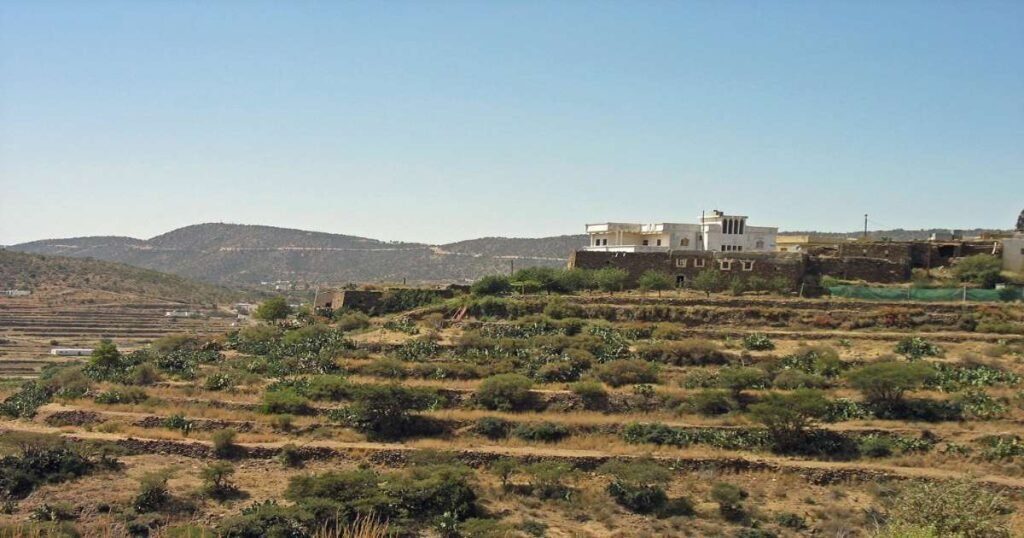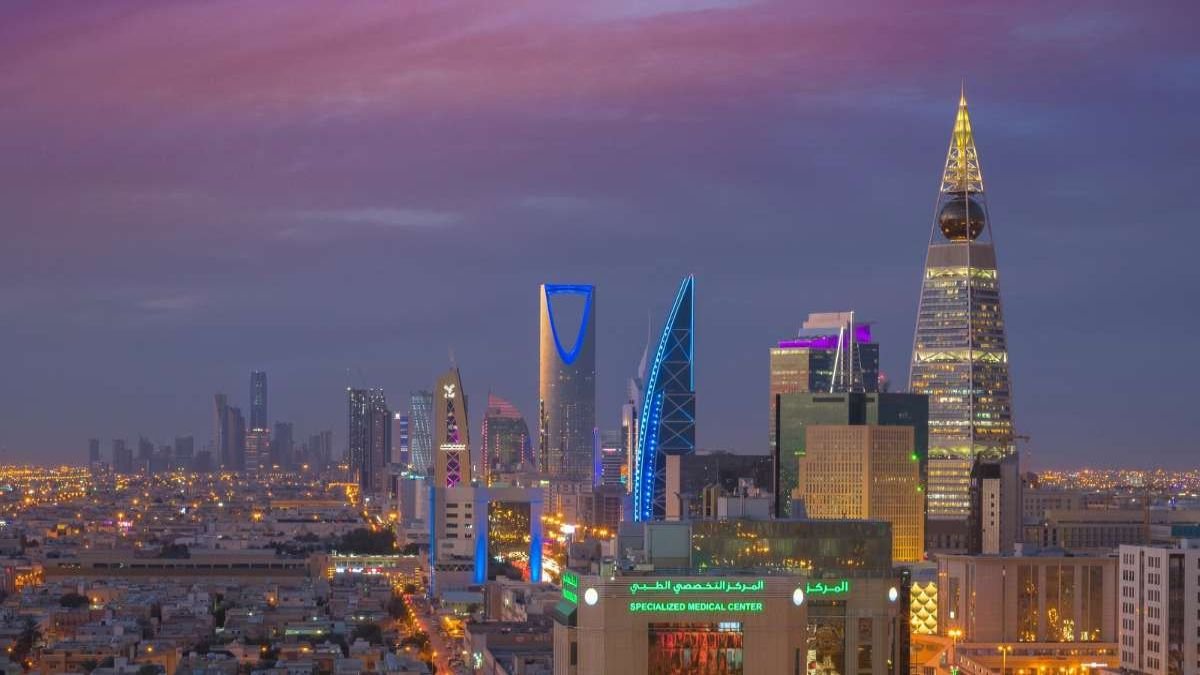Overview:
Saudi Arabia is a land of captivating contrasts, where ancient heritage sites, breathtaking natural landscapes, and innovative modern developments converge.
Known as the birthplace of Islam, it is home to sacred cities like Mecca and Medina, drawing millions of pilgrims each year.
Beyond its religious significance, Saudi Arabia offers a rich history, diverse landscapes, and emerging tourist destinations that reflect its cultural evolution.
Let’s journey through the top 15 tourist attractions in Saudi Arabia that showcase the country’s natural beauty, historical significance, and cultural richness.
Table of Contents
1. Mecca and the Masjid al-Haram

Mecca, Islam’s holiest city, is the birthplace of Prophet Muhammad and the location of the Kaaba within the Masjid al-Haram. It’s a revered pilgrimage destination for Muslims around the world.
Historical and Cultural Significance: As the focal point of the Hajj pilgrimage, Mecca holds profound significance in Islamic history. The city and its Grand Mosque have evolved over centuries, growing to accommodate millions of worshippers annually.
Unique Features: The Kaaba, covered in black silk embroidered with gold, is the symbolic center of Islam. The mosque’s recent expansions have made it one of the largest mosques in the world.
Best Time to Visit: Muslims visit year-round, but the Hajj pilgrimage takes place in the Islamic month of Dhu al-Hijjah, while Umrah can be performed at any time.
Travel Tips:
- Transportation: Mecca is accessible via Jeddah, which has direct international flights. High-speed trains connect Jeddah to Mecca.
- Accommodation: Many hotels around the Grand Mosque cater specifically to pilgrims.
- Local Customs: Only Muslims are permitted entry into the holy city of Mecca.
2. Al-Masjid an-Nabawi, Medina

The Prophet’s Mosque in Medina, with its iconic green dome, is the second holiest site in Islam and a pilgrimage destination for Muslims after Mecca.
Historical and Cultural Significance: The mosque was originally built by Prophet Muhammad himself. It houses his tomb, along with those of his close companions, making it a deeply significant religious site.
Unique Features: The mosque’s beautiful architecture and retractable domes are marvels, and the Rawdah ash-Sharifah (Sacred Garden) is a particularly cherished area for prayer.
Best Time to Visit: Outside the Hajj season, Medina is less crowded, allowing for a more peaceful visit.
Travel Tips:
- Transportation: Accessible from Mecca by train, car, or flight via the Prince Mohammad Bin Abdulaziz International Airport.
- Accommodation: Medina offers numerous hotels, many within walking distance of the mosque.
- Local Customs: Modest attire and respectful conduct are essential.
3. Al-Ula and the Ancient City of Hegra

Al-Ula, a city steeped in history, is home to Hegra (Madain Saleh), a UNESCO World Heritage Site featuring impressive Nabatean tombs carved into sandstone cliffs.
Historical and Cultural Significance: Hegra was an important Nabatean city, similar in architectural style to Petra in Jordan, and served as a trading hub on ancient incense routes.
Unique Features: The meticulously carved rock tombs, stunning desert landscapes, and archaeological remnants make Al-Ula a significant cultural treasure.
Best Time to Visit: October to March for milder weather.
Travel Tips:
- Transportation: Al-Ula has its own airport with flights from Riyadh and Jeddah.
- Accommodation: Options range from eco-lodges to luxury resorts like Habitas AlUla.
- Local Customs: Al-Ula’s historical sites are preserved; avoid climbing on or damaging monuments.
4. The Edge of the World, Riyadh

This natural wonder near Riyadh offers breathtaking cliffs that drop dramatically, providing panoramic views of the desert stretching to the horizon.
Historical and Cultural Significance: Known locally as Jebel Fihrayn, the Edge of the World has become a popular outdoor destination and symbolizes the vast expanse of Saudi Arabia’s desert landscapes.
Unique Features: The cliffs offer surreal, almost otherworldly views that give visitors a sense of standing at the edge of the earth.
Best Time to Visit: Late fall to early spring for cool temperatures.
Travel Tips:
- Transportation: A four-wheel drive is recommended; many tours operate from Riyadh.
- Accommodation: Riyadh is the best place to stay, with various lodging options.
- Local Customs: Carry plenty of water and respect the natural environment by leaving no trace.
5. Kingdom Centre Tower, Riyadh

This iconic skyscraper is one of Riyadh’s most recognizable landmarks, with a unique design featuring a sky bridge that offers stunning city views.
Historical and Cultural Significance: As a symbol of Saudi Arabia’s modern growth, the Kingdom Centre Tower showcases contemporary architecture and has become a center for shopping, dining, and business.
Unique Features: The sky bridge, suspended 300 meters above ground, provides visitors with breathtaking panoramic views of Riyadh.
Best Time to Visit: Evening to enjoy the illuminated city skyline.
Travel Tips:
- Transportation: Located in central Riyadh, easily accessible by public transport or taxi.
- Accommodation: Riyadh has a range of accommodations from luxury hotels to budget options.
- Local Customs: Dress modestly and avoid taking photos of people without permission.
6. Jeddah Corniche and Waterfront

The Jeddah Corniche, a beautiful stretch along the Red Sea, offers scenic views, public art, recreational areas, and cultural attractions.
Historical and Cultural Significance: Jeddah has long been the gateway to Mecca and Medina, blending cultural influences from around the world, and the Corniche reflects this diversity.
Unique Features: Highlights include the King Fahd Fountain, the largest seawater fountain in the world, and the Corniche Mosque, one of the city’s most picturesque spots.
Best Time to Visit: Winter for pleasant coastal weather.
Travel Tips:
- Transportation: Easily accessible by taxi or car.
- Accommodation: Jeddah offers numerous hotels along the Corniche.
- Local Customs: Respect local culture by dressing modestly, especially near the mosque.
7. Diriyah, Riyadh

Diriyah, the birthplace of the Saudi state, is an ancient city that has been beautifully restored and is known for its mudbrick architecture and historical significance.
Historical and Cultural Significance: Originally the seat of the Al Saud family, Diriyah played a crucial role in Saudi history and has been preserved as a cultural site.
Unique Features: The At-Turaif District, a UNESCO World Heritage Site, allows visitors to experience traditional Najdi architecture.
Best Time to Visit: October to March for mild weather.
Travel Tips:
- Transportation: About 15 minutes by car from Riyadh.
- Accommodation: Riyadh city center offers easy access to Diriyah.
- Local Customs: Follow the guided pathways and respect the preserved sites.
8. Asir National Park, Abha

Nestled in the Asir Mountains, this park offers breathtaking landscapes, hiking trails, and viewpoints over the lush valleys.
Historical and Cultural Significance: Asir is a region known for its unique culture, including traditional clothing, food, and architecture, different from other parts of Saudi Arabia.
Unique Features: Home to the highest peak in Saudi Arabia, Jebel Sawda, Asir National Park is a haven for outdoor enthusiasts and nature lovers.
Best Time to Visit: Spring and summer for pleasant mountain weather.
Travel Tips:
- Transportation: Fly to Abha, then take a car or local transport.
- Accommodation: Abha offers a variety of accommodations close to the park.
- Local Customs: Wear modest attire and respect the traditional culture of the Asir region.
9. Riyadh: The Capital City

Riyadh, the capital of Saudi Arabia, is a bustling metropolis that reflects the kingdom’s blend of tradition and modernity. It serves as a political, financial, and administrative center.
Historical and Cultural Significance: Founded in the 18th century, Riyadh has grown from a small settlement into a major urban center, showcasing the rapid development of the country.
Unique Features: The city features striking modern architecture, including the Kingdom Centre Tower, which is known for its sky bridge. Historic sites like the Masmak Fortress provide insight into the city’s heritage.
Best Time to Visit: The cooler months from October to April are ideal for exploring Riyadh, with pleasant temperatures and numerous outdoor events.
Travel Tips:
- Transportation: Riyadh has a well-developed public transport system, including buses and a metro line.
- Accommodation: A variety of hotels, from luxury to budget, are available throughout the city.
- Local Customs: Dress modestly in public, and be aware of local customs, especially during prayer times.
10. Al-Ula: A Window to Ancient Civilizations

Al-Ula is home to extraordinary archaeological sites, including the UNESCO World Heritage Site of Madain Saleh, known for its rock-cut tombs.
Historical and Cultural Significance: Al-Ula has been a vital trading post for centuries, showcasing remnants of the Nabatean civilization and other ancient cultures.
Unique Features: Visitors can explore stunning landscapes, including sandstone formations and the impressive Elephant Rock, alongside ancient tombs and inscriptions.
Best Time to Visit: The best time to visit Al-Ula is during the cooler months, from October to April, allowing for comfortable exploration of its outdoor wonders.
Travel Tips:
- Transportation: Renting a car is recommended for exploring Al-Ula’s attractions at your own pace.
- Accommodation: Al-Ula offers unique stays, including eco-lodges and luxury resorts.
- Local Customs: Respect the archaeological sites, and consider guided tours for in-depth knowledge.
11. Jeddah: The Gateway to Mecca

Jeddah, known for its beautiful coastline along the Red Sea, is a vibrant city and the primary gateway for Muslim pilgrims heading to Mecca.
Historical and Cultural Significance: As a historical port city, Jeddah has a rich trading history and is known for its unique architecture, including the traditional coral houses of Al-Balad.
Unique Features: The city boasts the famous King Fahd Fountain, one of the tallest fountains in the world, and the picturesque Corniche, which offers stunning views of the sea.
Best Time to Visit: The months from October to April provide the best weather for exploring Jeddah, with cooler temperatures and a variety of cultural events.
Travel Tips:
- Transportation: Taxis and ride-sharing apps are convenient for getting around the city.
- Accommodation: Jeddah has a range of accommodations, from beachfront resorts to budget-friendly hotels.
- Local Customs: Jeddah is more liberal than other cities, but it’s essential to respect local customs, particularly in public spaces.
12. Taif: The Mountain Retreat

Nestled in the mountains, Taif is known for its cool climate, beautiful landscapes, and vibrant rose gardens, making it a popular summer retreat.
Historical and Cultural Significance: Taif has a long history as a resort town, attracting visitors since the early Islamic period for its pleasant weather and natural beauty.
Unique Features: Visitors can enjoy the Taif Rose Festival, explore the scenic Al Hada Road, and experience the local markets filled with fresh produce and handcrafted goods.
Best Time to Visit: The ideal time to visit Taif is from April to October when the weather is mild and conducive to outdoor activities.
Travel Tips:
- Transportation: Renting a car is the best way to explore the scenic routes and attractions around Taif.
- Accommodation: Taif offers charming hotels and resorts with stunning views of the mountains.
- Local Customs: Respect local traditions, especially in more conservative areas, and dress modestly.
13. The Red Sea Coast

The Red Sea coast of Saudi Arabia is famous for its stunning beaches, vibrant coral reefs, and opportunities for water sports and relaxation.
Historical and Cultural Significance: Historically, the Red Sea has been a critical trade route, and its waters are steeped in maritime lore.
Unique Features: Destinations like Umluj and Yanbu offer beautiful sandy beaches, crystal-clear waters, and fantastic diving and snorkeling experiences.
Best Time to Visit: The optimal time for beach activities is from October to May when the weather is pleasant and ideal for water sports.
Travel Tips:
- Transportation: Coastal towns are accessible by road, and many offer rental services.
- Accommodation: Enjoy beachfront resorts and hotels that cater to water sports enthusiasts.
- Local Customs: Swimwear is acceptable at beaches but should be modest in public areas.
14. King Abdulaziz Historical Center

Located in Riyadh, the King Abdulaziz Historical Center is a cultural complex dedicated to the history and heritage of Saudi Arabia.
Historical and Cultural Significance: This center encompasses several museums and historical sites, reflecting the kingdom’s journey from its founding to the present day.
Unique Features: Highlights include the King Abdulaziz Museum, which showcases artifacts, photographs, and exhibitions related to Saudi history and culture.
Best Time to Visit: The center can be visited year-round, but the cooler months are more pleasant for outdoor activities.
Travel Tips:
- Transportation: Accessible via public transportation and taxis within Riyadh.
- Accommodation: Stay in central Riyadh for easy access to various cultural attractions.
- Local Customs: Follow museum etiquette by maintaining silence and respecting the exhibits.
15. Abha: The Jewel of Asir

Abha, located in the Asir region, is known for its stunning landscapes, cool climate, and rich cultural heritage.
Historical and Cultural Significance: Abha is a center for the Asiri culture, showcasing traditional crafts, music, and cuisine, making it a vibrant destination for cultural immersion.
Unique Features: The city is surrounded by beautiful mountains, and attractions include the Asir National Park and the unique architecture of the mud-brick houses in the nearby village of Rijal Alma.
Best Time to Visit: The best time to visit Abha is during the summer months (June to August), when the climate is mild and perfect for outdoor activities.
Travel Tips:
- Transportation: Buses and taxis are available for navigating the region, but renting a car is recommended for flexibility.
- Accommodation: Abha offers a range of hotels, including traditional guesthouses that provide a local experience.
- Local Customs: Embrace local traditions and try the regional cuisine, which reflects the flavors of the Asir region.
Also Read: Top 15 Tourist Attractions In Jordan
Conclusion
Saudi Arabia is a land of contrasts, where ancient traditions meet modern innovation.
From its rich history and cultural diversity to breathtaking landscapes and vibrant festivals, the kingdom offers a myriad of experiences for every traveler.
Whether exploring historical sites, indulging in local cuisine, or engaging in outdoor adventures, visitors are sure to leave with unforgettable memories.
As Saudi Arabia continues to open its doors to tourism, now is the perfect time to discover all that this remarkable destination has to offer.
FAQs
1. How can I experience the local culture in Saudi Arabia?
Engage with local communities through festivals, workshops, and visits to traditional markets, and participate in cultural events.
2. Are there any specific health precautions I should take when visiting Saudi Arabia?
Travelers should be aware of local health guidelines, especially concerning food safety and hydration in hot climates.
3. What languages are commonly spoken by locals?
Arabic is the official language, but many people in urban areas speak English, especially in tourism and business contexts.
4. Can I visit historical sites without a tour guide?
While some sites can be visited independently, hiring a local guide can enhance your understanding of the historical and cultural significance of the sites.
5. What should I know about Saudi Arabia’s customs and etiquette?
Understanding local customs, such as greeting protocols and dress codes, is essential. Modesty and respect for traditions are highly valued in Saudi culture.

